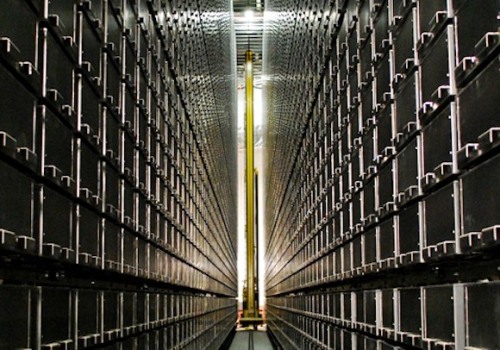In Chicago, opened a modern automatic robotic library

I remember when I was a student, and came to the reading room for a book or magazine, sometimes I had to wait 30-40 minutes or more for my order in the reading room. It is good if I had all the data on the book, and I could make an order. But if only the name and author were known, it was necessary to go to the catalog, rummage there in the file cabinet, write out all the data on a piece of paper (and the catalog, by the way, is located in another building of the institute), and then go to the reading room for your order. It might well turn out that there is no data, or the book was handed over, and then you had to go back to the catalog again, look for something to replace. In general, the procedure is still there. And now I envy the students of the University of Chicago with white envy, who have at their disposal an ultra-modern robotic library that can find and issue an order in just five minutes.
The library tried to create a catalog of publications in electronic form, so that students and teachers would be even easier. But if there is no publication in electronic form, the reader can place an order directly from a PC by sending a request to the repository.
The heart and brain of this library is a five-level repository, where machines are in charge of everyone, people are not needed there. By the way, the repository is located underground. All books are compactly folded into special metal racks, 100 books per rack. According to the developers, such racks are seven times more compact than regular library shelves. In total, there are about 35 thousand such racks in the store, and the number of books and magazines stored there is about 3.5 million copies.

Of course, the storehouse maintains constant humidity and temperature, which allows you to keep books for a long time in good condition.
As soon as an order for one of the books arrives, one of the five robotic cranes gets to work, looking for the right book in the store. As mentioned above, everything is fast enough, from the order to the issuance of the book in the reading room an average of five minutes passes. Moreover, there is no need to rummage through paper catalogs, there is no need to yank the librarian, asking about a particular publication or confusing it with incorrectly recorded data. Everything is very clear and fast.
By the way, the library cost the university $ 81 million. One can only envy the university, which is able to spend such an amount on the equipment of such a library. Of course, now everything is going online, and we hope that in 5-10 years most of the literature will go online, but so far the libraries are not going to disappear, and such solutions are very encouraging.
Via singularityhub
